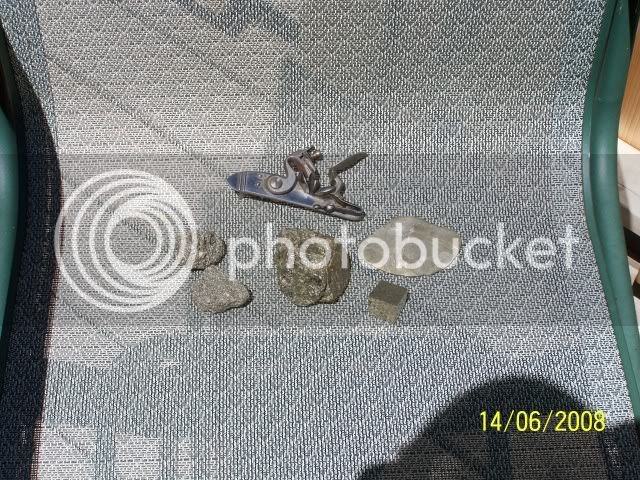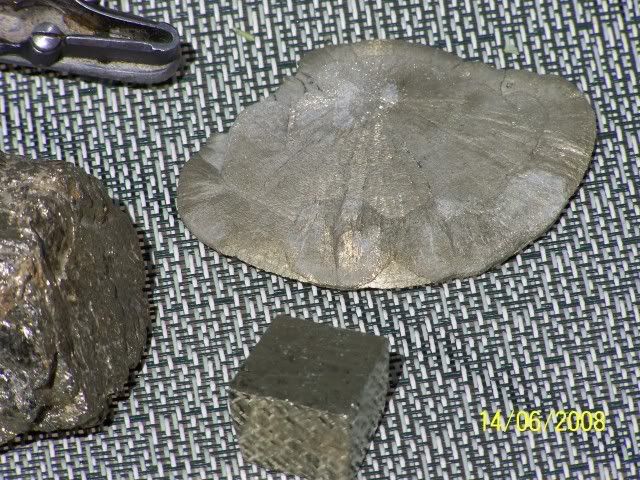TNHillbilly
45 Cal.
- Joined
- Apr 18, 2008
- Messages
- 521
- Reaction score
- 0
Totally frustrated with the inability of my 'Lauber wheellock' to fire, I put it away in a box a year ago and worked on other 'stuff'. I stopped in here the other day to see what progress others may have had.....I suppose Wulf has built 5 or 6 gonnes by now! I noticed the dissection of the original wheelie in a post down below, and specifically, the note of about 2 1/2 lbs pressure exerted on the cock. I decided to dig mine out and see if my brain worked any better...having aged a year, or so (still unsure of that)! I also noted reference/comment of pyrites in a mine spontaneously igniting......Hhhmm. I took some of my pyrites I'd cut down and thought I'd stick them in a flintlock pistol of known ability. Repeated attempts produced no spark, nothing, nada. Question: should a pyrite spark in a flintlock? Secondly: why? I tied a wire to the cock and inverted the lock in my hand, attaching a big soda bottle of approximately 4 lbs...didn't move the dog/cock. Do I have too much pressure on the wheel......slowing it down, as it were? Instead of trying to solve the entire problem, I thought maybe isolating/testing each component might yield some results. I might add, I also tried some ferrocerium in the flinter....they didn't work either. My French Amber 'flint' did work in the flintlock.







